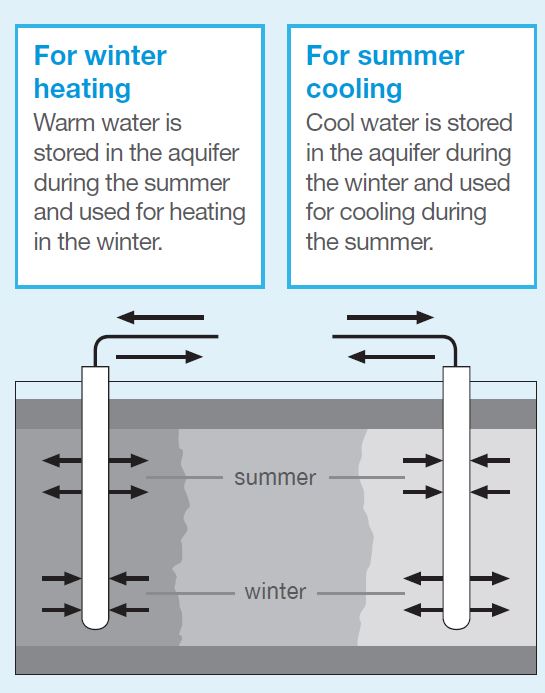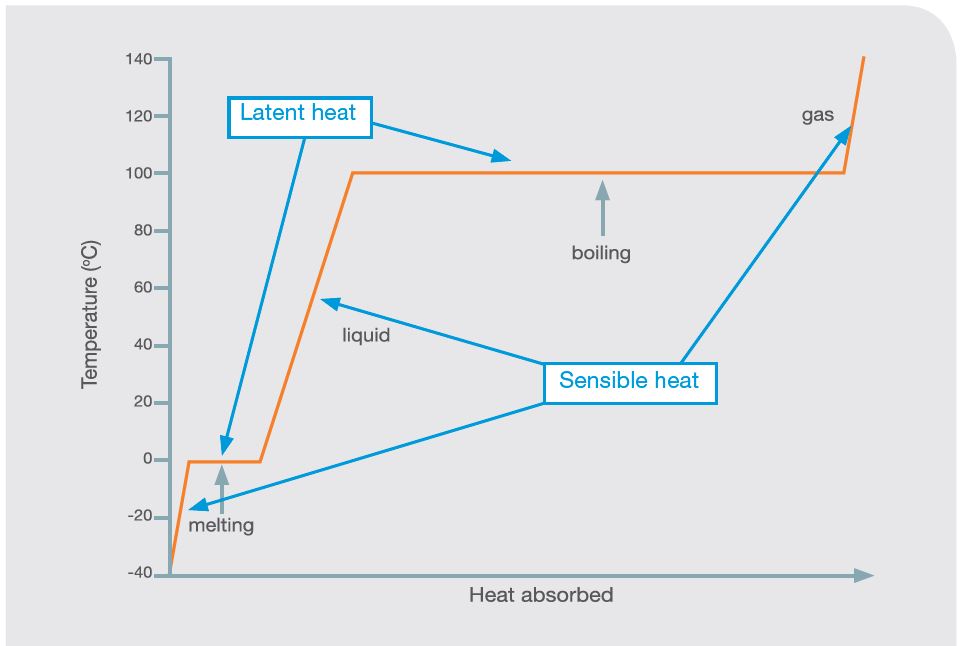Please click here to access the main AHDB website and other sectors.
- Home
- Knowledge library
- What is the best medium to store heat?
What is the best medium to store heat?
Although water is often the best medium to store heat, we also take a look at geological storage and phase change materials.
Back to: The basics of thermal storage for horticulture
Water; probably the best medium
Is water the best medium for heat storage? The answer is, probably, yes.
Water is:
- Cheap
- Safe
- Readily available
- High in thermal capacity
- Very adaptable – in terms of its use through heating systems and heat generators
All of these characteristics make it an ideal heat storage medium, especially in a purpose-built, above-ground store. There are other potential options for heat storage, including geological storage or in phase change material.
Geological storage
In some parts of the world, geological conditions lend themselves to heat storage underground in rock or in water aquifers. UK conditions are not generally favourable to this method of storage, although there are some configurations associated with heat-pump applications which can use underground heat storage to some advantage.
Where the geology of underground rocks allows storage of water in discrete areas without mixing, it is possible to have a ‘warm water area’ and a ‘cool water area’. In summer, a heat pump can be used to store heat in the warm-water area and use it to heat during the winter. The cycle can be reversed for summer cooling.
Figure 1. Using the ground as a heat sink and heat store
Phase change materials
There have been suggestions that the application of phase change materials – which store heat energy at a constant temperature as ‘latent heat’ through a phase change between solid and liquid state – might bring benefits, such as a reduction in volume of material needed to store a given amount of energy and an ability to store more energy at a lower temperature.
Water takes up a massive amount of storage volume, as all heat stored in horticultural water systems is done so in the form of ‘sensible’ heat (i.e. heat absorbed or given up during a change in temperature of the stored water).
In a phase change (a change between solid and liquid or liquid and gas), energy absorbed/emitted per unit volume is much greater than with a conventional system, which requires a change in temperature for energy storage. Hence storage-vessel size can be reduced and more stable temperatures in the storage medium can be maintained.
Temperatures at which changes of state take place vary between materials. With water at normal atmospheric pressure, the solid–liquid transition takes place at 0°C (freezing point) and liquid–gas transition at 100°C (boiling point).
Figure 2 shows the relationship between heat absorbed and temperature, and the effect of state change for water. Other materials have different temperatures at which they solidify (freeze) or evaporate (boil). Choosing an appropriate transition temperature is important in making a system work well.
Figure 2. Heat absorbed against temperature for H2O
In practice, the most useful change of state is that which takes place between the solid and liquid phase. The change from liquid to gas tends to introduce problems from large changes in material volume and the containment of gases at higher than atmospheric pressure.
Commercially, phase change systems have not found favour, as the benefits have not been enough to justify their higher capital costs. Simply speaking, water storage is cheap and the savings in volume reductions offered by phase change materials have not been enough to warrant their high cost.
What does the future hold?
Looking to the future, however, phase change materials may come into their own when used with heat pumps. Since the temperature output of heat pumps is lower than a boiler, much more storage volume is required for them to store the equivalent amount of heat. In fact, in many cases, water-based heat storage would not be economical with a heat pump. A phase change material operating at about the temperature output of a heat pump could solve this by dramatically reducing required storage volumes. Only time will tell if there is enough benefit in this area to make phase change materials a real commercially viable option in this area.
An explanation of latent heat and sensible heat
Latent heat is the energy related to changes in state between liquids, gases and solids when there is no change in temperature of the material, just a change in state, i.e. when water boils and turns to steam.
Sensible heat is the energy related to changes in temperature of a gas or object, where there is no change in state, i.e. water being heated from 10–95°C.
Useful links
Discover why use thermal storage
Visit our GrowSave pages to read more about energy-related topics
Got a question. Ask a member of the team:
Topics:
Sectors:
Tags:



